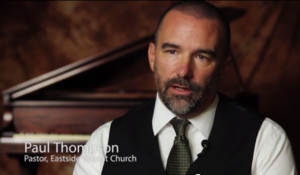(Book Review of “Autopsy of a Deceased Church” part 3. Part 1 and Part 2)
Chapter 5: The Budget Moved Inwardly
“Where your treasure is, there your heart will be also.” (Matthew 6:21)
When the autopsy shows a drifting of spending from giving to self sustaining then this can be a helpful diagnosis of when a church should hear the warning.
I’m not one to say that financial tightness is necessarily an unhealthy state or that financial liberty is a reflection of health. But I do think there are things to discover in the financial money trail that a church should pay attention to.
Chapter 6: The Great Commission Becomes the Great Omission
“Thriving churches have the Great Commission as the center piece of their vision…”
I agree with Rainer’s autopsy report here on this matter; however, I wish the standard for words were more consistent.
Words like “thriving”.
What does a “thriving church look like? I realize I may be moving where Rainer had no intention for the discussion to go, but this is where a lot of breakdown happens for me and I start getting nervous with a church growth/health book.
I visited a church in a neighboring state recently on my way to visit my parents. It was a Wednesday night. I had looked up online to make sure this church had a mid week bible study or prayer time, sure enough it was posted on the churches website that they began at 6:30 p.m. When I arrived in the parking lot I could not believe how full, even packed the parking lot was. I thought, “wow, I didn’t know churches still had this kind of attendance on Wednesday nights.”
The next 45 minutes was among the most awkward moments I had in a church in recent years.
There was activity everywhere. And yet no one seemed to know where the adult bible study/prayer gathering was. I was ushered around the building buzzing (maybe thriving) with activity. But still no one could find the room, or the leader, of the adult bible study/prayer gathering. Eventually, I was left, alone, in the room where they thought the gathering took place. For the remainder of the time I sat in the room, alone.
Would that church be called a “Thriving church”? Likely even placed in front of other churches as a leading church. What about the church that has a small band of faithful, praying every week for their city, community, nation and the nations of the world? Would that nearly empty parking lot prove a “dying” prognosis?
This is why I wish greater care was given to ‘buzz words’ or language that pastors and church leaders get so quickly derailed on. And I, admittedly, get lost with. I was able to curb my frustration with the one-word hang up to hear Rainer’s autopsy report clearly. Maybe even helping me remember that “thriving” activity doesn’t necessarily mean Great Commission work is happening.
This was a good chapter, even with my hang up on the word “thriving”.
Chapter 7: The Preference-Driven Church
Rainer explains some of the horror of what happens when preference is placed above submission to Christ.
I’ve heard this kind of story over and over and over. I’ve even lived through some of these nightmarish congregational meetings where individuals put their preference out as if a style of music is what is worshiped here, time of the meeting takes place, what translation of the bible belongs in the pews, to build debt free or go into debt, brick exterior or siding…
This autopsy report is ugly, it’s like a cancer.
It’s more than just the “old guard” wanting to hang on to the memories of a nostalgic day of the past. It’s as much the cancer of wanting something new and fresh.
Right now Rainer is only giving the autopsy report, I’ll hope when he gets to the response portion of the book he’ll be talking about the need for not only individual repentance, but corporate repentance as a solution for the selfish, sinful behavior we all have tendency for.
I’m holding out hope.
I’m past the halfway point of this short read. My halftime assessment is still positive. I think it is a good book and to be as fair as possible to Thom Rainer, I think this book does have helpful and healthy reports from the autopsy table of the deceased church.
